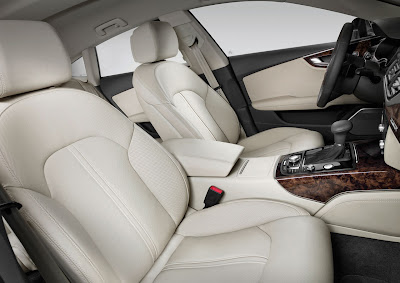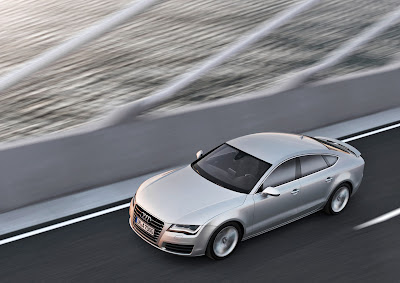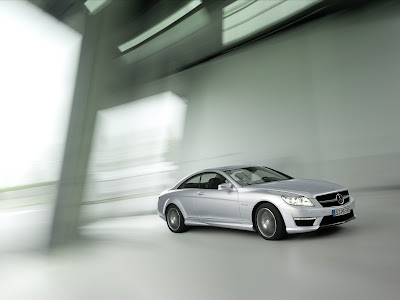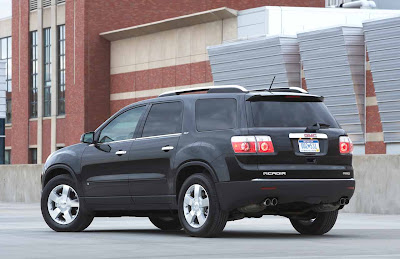
Saturday, July 31, 2010
Suzuki 2010

BMW 2010
By Sam Mitani

BMW announced at the New York Auto Show
The B7 reaches dealerships in April. The car starts at $122,875. The long-wheelbase model begins at $126,775, and the awd xDrive model starts at about
Friday, July 30, 2010
Research Sports Cars Chevrolet 2010
Research Sports Cars Chevrolet 2010

The best sports cars are wickedly fast, have razor-sharp handling and pretty much guarantee you’ll be smiling after every drive. Yet when it comes to resale value, many of these dream machines can turn into a money-losing nightmare due to huge depreciation.However, some sports cars manage to buck the trend and hold onto their value year after year. Cars like the Chevrolet Corvette Grand Sport and Porsche 911 Carrera have built enormous fan bases after many decades of production. Others, like the Jaguar XK and Audi S5, woo buyers by managing to balance driving thrills with elegant exteriors and a modicum of practicality.Of course, there are also sports cars that are simply the hottest must-have machines of the moment. The Nissan GT-R manages to defy physics with its incredible grip on the road. And the electric-powered Tesla Roadster allows its lucky owner all the pleasures of driving a nimble sports car in one guilt-free, zero-emissions package.
2010 Chevrolet Corvette Grand Sport
When the first Corvette arrived back in 1953, it really wasn’t much of a sports car. The anemic “Blue Flame” inline-6 engine provided pilot light-levels of performance. Over the years, Chevrolet added a V-8 engine, independent rear suspension, and a near-constant updates to its flagship sports car.Today’s Corvette, especially in Grand Sport trim, remains one of the best performance bargains on the market. No wonder Corvettes have some of the industry’s strongest resale values. The Grand Sport starts at $55,720, which is approximately $6,000 more than a base Corvette. Trust us, the extra money is worth it. A handbuilt 430-bhp V-8 engine, and the same brakes and tires as the fire-breathing (and vastly more expensive) Z06, conspire to make the Grand Sport the best deal in the value-packed Corvette lineup.
Research New Cars automotive
Research New Cars automotive
By: Jeff VothIt’s summertime and the living is easy.
Unfortunately the driving is most likely not. Hot weather, especially in regions of the United States that experience a significant change of season, can be tough on your vehicle. Here are several tips to make commuting to work or taking that long-awaited family road trip a little easier to deal with.

* It may seem obvious, but so many of us forget to have regular checkups performed on our automobiles. One of the most important things you can do to make sure your vehicle is ready for summer is to maintain the engine. More commonly referred to as a tune-up, this service should be completed by a professional mechanic to make sure the job is done right.
* Be aware that different service centers offer different types of tune-ups. Ask questions and find out what your mechanic includes in their service. A quality tune-up will change the spark plugs if necessary and run a precise series of diagnostic tests and adjustments to maintain top engine performance.
* Tune-ups do not normally include: oil changes, chassis lubrication, brake work or inspection, tire rotation, balancing, or alignment, or transmission fluid flush. As a general rule it is a good idea to make sure these tasks are completed at the same time.
* Check your vehicle owner’s manual for a detailed service schedule and stick to it. Putting off engine maintenance may result in a breakdown in the middle of your morning commute or vacation, thus ruining your drive to work or that highly anticipated getaway. Regular maintenance goes a long way in helping keep the peace with your vehicle and the rest of the family.

Check Vehicle Fluids Regularly
Oil should be changed every 7,500 miles or once a year, whichever comes first. If you use synthetic oil, such as the new Pennzoil Ultra set to be released this fall, recommended oil changes will be less often. When changing your oil, it is also important to change the oil filter at the same time. A dirty filter is not something you want contaminating new oil.Coolant and antifreeze are the same fluid. Change these fluids once a year and be sure to flush the entire system to remove any built-up deposits. Ask your mechanic to check all hoses for any cracks or wear and tear.Brake and steering fluids are critical to the operation of your vehicle. Open the hood and look to make sure proper levels are maintained, or have your mechanic go over the vehicle at every oil change. Check your wiper blades on a regular basis and be sure to have plenty of washer fluid in the reservoir and an extra container in the trunk just in case. Driving around with a dirty, streaky windshield is never a good idea.
Keep Your Tires Inflated
Maintaining your tires is an easy task that only takes a few minutes and will save money and potential headaches down the road.Always make sure your tires are properly inflated. Under-inflated tires cause unnecessary stress on the rubber, with the result being early and irregular tread wear. We can all benefit from a little improvement in fuel economy--proper tire inflation helps with this as well.As funny as it may sound, get to know how your tires look when they are properly inflated. Recognizing any change in inflation while approaching your vehicle becomes a little easier if you know what they look like at peak inflation. Keep a tire pressure gauge in the glove box and use it on a regular basis to check your tires. Refer to your owner's manual for correct tire inflation rates. Do not use the figure posted on the sidewall of the tire. This is the maximum tire pressure allowed, not the proper tire pressure for everyday driving.Before a trip, check the spare tire to confirm it's secure and properly inflated. Also, make sure you know where the tire jack is and how to use it. As a way to become more comfortable with your automobile, get the family together and practice changing a tire before you leave. If your vehicle is equipped with a small spare tire, or foam filler as is the case with many new cars today, learn the basics of what to do in an emergency. If you are a member of an auto club, keep the number in your glove box as well as stored on your cell phone.
Develop an Emergency Kit
Now that your vehicle is all set for summer, you should take some time to develop an emergency kit to be stored in the trunk of your vehicle just in case something unforeseen happens. Here is a list of some of the essential items to include.
* @Energy bars
* @Water bottles (change every six months)
* Emergency blanket
* @Extra clothing and shoes
* First aid kit
* @Road maps
* @Whistle
* Collapsible shovel
* @Scraper and snowbrush (if applicable to your climate)
* @Candle and matches
*@ Flashlight (preferably wind-up)
* @Jumper cables
* @Road flares (minimum 2)
* @Electrical tape
* @Fire extinguisher
Included in every emergency kit should be a multi-purpose tool such as the new “Rescue Tool” by Victorinox. Developed in co-operation with emergency medical and rescue services, features include a window breaker, wire stripper, one-handed blade, Phillips screwdriver, and belt cutter among others.
Wear Sunglasses While Driving
ZZ Top recommends buying a cheap pair of sunglasses in their classic song from 1980. While this may be a great back-up plan for the glove box, a pair of quality driving glasses is a much smarter way to go.Most experts recommend polarized lens as they dramatically reduce haze and glare, reduce eye fatigue, and allow the wearer to see objects more clearly. Manufacturers such as Serengeti Eyewear use distortion-free optical glass. Heavier than the plastic lenses found in less expense eyewear, glass absorbs 100% of UVB rays and no less than 98.5% of harmful UVA rays. New retro designs from Serengeti include Vasio and Fontana, so style is never a concern.While it may seem obvious for adults to include a quality pair of sunglasses as part of their regular commute or family trip, kids benefit just as much if not more. As reported on the website allaboutvision.com, experts believe our eyes get 80 percent of their total lifetime exposure to the sun's UV rays by age 18. The website goes on to state; “since excessive lifetime exposure to UV radiation has been linked to the development of cataracts and other eye problems, it's never too early for kids to begin wearing good quality sunglasses outdoors”.
Conclusion
Summer drives are an experience to be shared with fellow commuters on the road and hopefully our families on vacation or weekend road trip. With a little planning and vehicle maintenance, it is certain to be more about the drive and less about unwanted stops. Plan for things to go wrong at some point and when they do the pain will be a little less stressful. For those times when all is right, put on the shades and let the go times roll.
new concept Cars Hyundai Sonata 2009 of New York
new concept Cars Hyundai Sonata 2009 of New York
By Mike Monticello

* The 11th concept car penned by Hyundai's California Design Center in Irvine is called the Nuvis. Sporting gullwing doors, the Nuvis is noteworthy for two reasons: First, its hybrid drivetrain will find its way into the next-generation Hyundai Sonata, and second, Hyundai says the concept's styling hints at what the Santa Fe's replacement could look like.
* Hyundai's Hybrid Blue Drive architecture combines a 2.4-liter 4-cylinder (known as the Theta II) with a 30- kW electric motor, the last also producing 151 lb.-ft. of torque. The total estimated output of 228 bhp is put to the road via a 6-speed automatic transmission. Hyundai says the Nuvis's lithium polymer batteries, which are stored underneath the trunk floor, are more durable and space efficient than nickel-metal hydride and lithium- ion versions.
* As a parallel hybrid, the Nuvis can be driven in all-electric mode, gasoline-engine-only mode as well as any combination thereof. Engine management software automatically shuts off the gasoline engine when the Nuvis comes to a stop, improving overall fuel mileage and providing zero emissions, while Hyundai's Integrated Starter Generator (ISG) restarts the engine once pressure is applied to the accelerator pedal.
* Besides optimized engine-management software for the Theta II, fuel consumption is further reduced by using electric assist for the vehicle's steering system and air-conditioning compressor, as well as through the use of low-rolling-resistance tires. Hyundai estimates the 188.3-in. long and 3400 lb. Nuvis would achieve fuel ratings of 34 mpg city/35 mpg highway.
* Hyundai says the Nuvis's radical styling "hints at a possible design direction for a future-generation crossover," most likely the next Santa Fe or its replacement, although don't count on the production vehicle using those gullwing doors! The staff at the California Design Center "studied the way water splits across and flows around the hull and sides of a boat" in creating the Nuvis, to form the illusion of constant motion.* The large gullwing doors open to a luxurious 4-seat cabin with a "cascading" floor and ambient blue lighting. The seat fabric is made from 100-percent reclaimed soda bottles, while the seatbelts were made by Harveys Original Seatbeltbags (they make handbags out of seatbelts); Harveys also provided two matching handbags for the Nuvis.
* The Nuvis's instrument panel streams information throughout the cabin, with passengers able to access each other via Methode Electronics TouchSense technology that links all four seats; after all, why go to the trouble of actually talking to one another?
New Output Cars 2010 Nissan Leaf
New Output Cars 2010 Nissan LeafBy Jeff Voth

The coming introduction of the Nissan LEAF marks a major milestone for the future of personal urban driving. The LEAF is different from all other “green” vehicles currently on the market. It is a true battery-powered electric automobile: not a hybrid with multiple power sources, but an electric-only, five-seat, five-door sedan. Plug it in at home, drive a maximum of 100 miles to the office and back, then recharge it at the end of the day. It doesn’t get much easier than that. Unlike the Chevrolet Volt, which undoubtedly gets closer to reality with each passing month, the Nissan LEAF is set for a December launch this year. In the U.S., a $99 placeholder fee is all that it takes to get your name on the list of prospective buyers.
So what’s the catch? Surely it can’t be that simple.
It may seem obvious to say, but to be effective, the Nissan LEAF needs access to electricity. The most convenient way to recharge the LEAF is in your home. With this in mind, Nissan partnered with AeroVironment Inc. to design and install a simple 220-volt home charging dock. Compact and weatherproof, it easily fits inside your garage or outside, where convenient charging can take place.Should you decide to purchase a Nissan LEAF, an appointment is scheduled for installation of the charging dock. A certified electrician will assess your home and within 24 hours provide a quote for the cost of installation. Tax credits may be available for up to $2,000 to help offset the cost.Assuming all goes according to plan, the main concern for recharging the Nissan LEAF on a daily basis is most likely not when you arrive at home. Instead, the biggest obstacle to mass acceptance may be our daily commute to the office, or the possibility of a weekend or longer drive that exceeds 100 miles.To best charge the Nissan LEAF, a 480-volt power source is required. With 480-volts, the vehicle can achieve 80% capacity in just 30 minutes. Working with federal, state, and local governments, Nissan is already discussing plans to add this plug-and-go technology in the near future. Urban centers such as Seattle, Phoenix, Tucson, and various cities in California and Oregon are all looking at ways to simplify the charging process. Considerations demand a timely but effective response, as Nissan is not the only automaker bringing new electric cars to market. The Mitsubishi i-MiEV, MINI E, and Chevrolet Volt are already testing, and should be released soon after the Nissan LEAF.With so much yet to be done to integrate electric cars into everyday life, is the time right for an all-electric automobile? The simple though not-so-obvious answer to this question is an emphatic yes!Mark McDade, director of marketing at Nissan Canada, believes there are four main reasons why now is the time to turn over a new LEAF in the auto industry:* First, President Obama has announced his goal: By 2050, vehicles must reduce emissions by 83%. Even the most optimistic of us realizes that any chance of achieving this enormous reduction requires time and a vast commitment to future technologies. The LEAF is a first step for Nissan in the direction needed to achieve this goal.* Second, the price of oil is certain to dictate the types of technology propelling us forward in the future. At today’s rate of $80 a barrel for oil, the concern to burn less is very real, but panic has yet to hit the market. Many analysts believe $100 a barrel will soon be reality, while some alarmists claim it may not be too long before $200 is the norm.* Third, the current mindset of the consumer understands that change is underway, and is looking for alternative solutions. As Mr. McDade stated when interviewed for this story, "A pure electric vehicle delivers this in spades."* Fourth, and perhaps the most significant at Nissan, according to Mr. McDade, is that the electric automobile is ready now. Nissan began testing batteries as an alternative power source back in the 1940s and has been working in earnest for the past 20+ years. The most visible applications from recent history include the Nissan Altra EV introduced at the 1998 Los Angeles International Auto Show, and the two-seater Nissan Hypermini one year later. The 2011 Nissan LEAF is the culmination of Nissan's vast experience and demonstrates just how far the technology has come.
Conclusion
A transformation is underway in the auto industry. The time for alternative power is now, and whether we like it or not, our relationship with the automobile is certain to be different. Some will resist, others will embrace the new reality. The Nissan LEAF is hereNissan LEAF SpecificationsEngine: 80 kW AC synchronous electric motor24 kWh lithium-ion battery3.3 kW onboard chargerSteering: Vehicle speed-sensitive power assistedBrakes: Power 4-disc regenerative, ABS/BA/EBDAir Bags: 2 front, 2 side, side curtainTop Speed: 90 mphCompetitors: Chevrolet Volt, MINI E, Mitsubishi i-MiEVMSRP: $32,780 (as low as $25,280 after tax savings
Wednesday, July 28, 2010
Tuesday, July 27, 2010
Subscribe to:
Posts (Atom)















































.jpg)